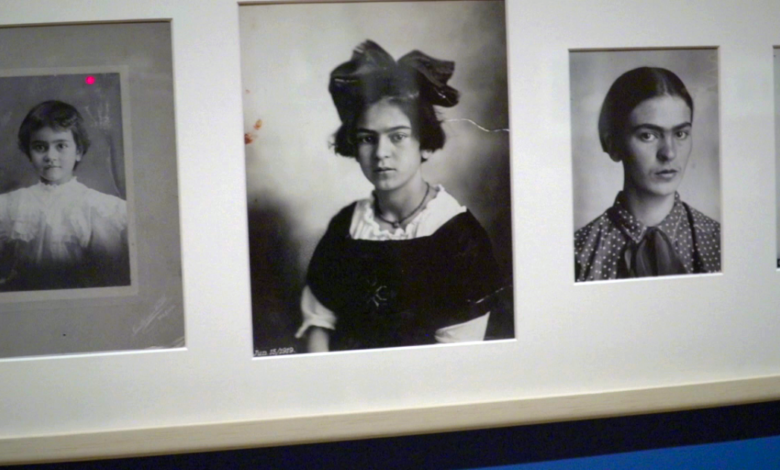
CHICAGO — Mexican artist Frida Kahlo helped capture a culture that hasn’t always been highlighted in American media and art. She was known for her self-portraits.
Her image in fine art elevated her celebrity.
Of Frida Kahlo’s 143 paintings, 55 are self-portraits.
“I would argue that the image of Frida Kahlo as the artist is more recognizable than any other artist now. More than Warhol, more than Picasso, more than Van Gogh,” said Rebecca Meyers, permanent collection curator at the National Museum of Mexican Art.
And now, photographs from Kahlo’s private collection are on display for the first time at the National Museum of Mexican Art.
“When she died, Diego Rivera, who was her husband, had all of her personal belongings put into a little tiny room, a bathroom, and then sealed up,” said Cesareo Moreno, chief curator at the museum.
That room was discovered and unlocked decades later.
“They found her dresses, her medication, her jewelry, her corsets and these 6,000 photographs,” he said. “So, the time capsule was opened 50 years later and really revealed a part of Frida's life that was unknown up to now.”
The traveling exhibit of 240 images now provides an unprecedented glimpse into all aspects of her personal life.
“It's kind of like going into a small photo album — very intimate black and white exhibition. Something you won't really you really want to get close to, to inspect,” said Meyers.
Some photos explore her political leanings and revolutionary ideas. Another section called "Her Broken Body" looks at the pain and suffering she endured after nearly dying in a bus crash resulting in fractures in her spine, collarbone and ribs.
“She surrounded herself with snapshots of her family and friends and people she loved so much like we collect photographs today. Frida did also and in a sort of a special way, she's the first curator of this collection of photographs,” said Moreno.
Divided into six sections it begins with her family origins – the life of her mother and father together.
“And then it goes into Casa Azul, which is such a special section because it talks about the beginnings of her home that is now the Museo Frida Kahlo,” said Moreno.
Once known only as the painter-wife of renowned artist Diego Rivera, she came into her own through her works. She became a cultural icon, a symbol of women’s inner strength, and a celebration of Mexico.
“I think her reputation has even surpassed Rivera's. I think it's important that she's also she's kind of a doorway into the Mexican culture,” said Meyers.
Another doorway into her inspirations is revealed in her father’s own self-portraits.
“It turns out after looking at some of these photographs that were hidden for so long that her other love, her father, truly influenced her greatly with the whole idea of selfies,” said Moreno. “The man liked to take his own photograph and kind of had it down. He figured out how to do it well.”
Those selfies were prototypes for the style in which Kahlo painted her father and her distinct self-portraits.
“This sort of gives us a back story. It fills in some gaps that we didn't even know were missing, and I think really reveals a whole other side of Frida.”
It’s an intimate and fascinating insight into one of the most prolific and iconic artists ever.







